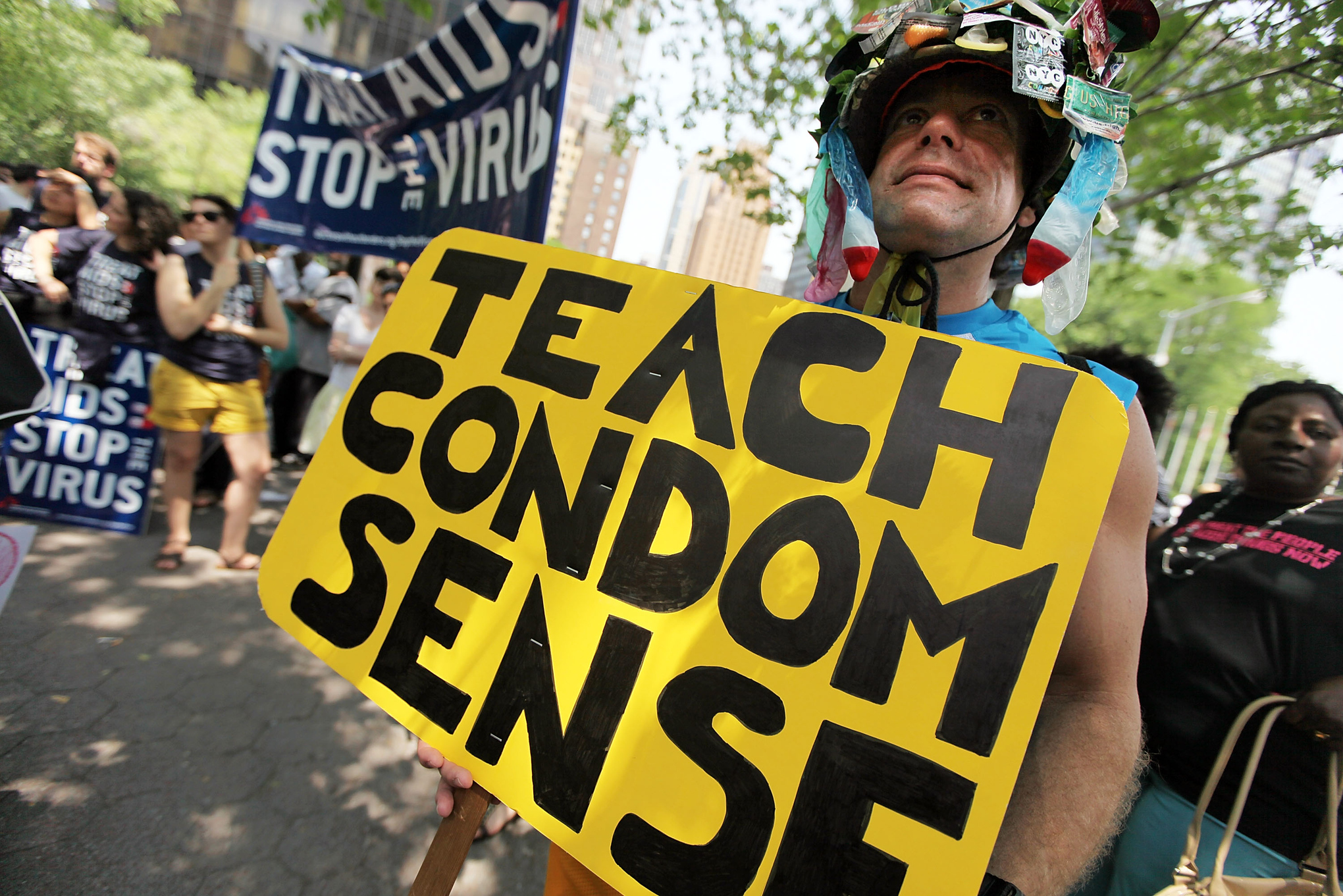When February rolls around, you can count on two things: the Super Bowl, and a preponderance of reminders that Valentine’s Day is looming. On college campuses, the latter often manifests itself in the form of safe sex PSAs and education initiatives.
You’ll see a multitude of tents and tables in the quad, with student health groups and Greek organizations handing out free condoms and pamphlets about safe sex practices. For most of us (or for me, at least), these endeavors are utterly futile. My current romantic situation means that handing me a condom is akin to handing a dog a set of car keys—we’ll both find use for them, but not the intended one.
That’s not to say that safe sex education is a total waste. Any effort put toward limiting the incidence of STI’s and unplanned pregnancy is noble. But it isn’t until I walk past a poster inviting students to my school’s Thursday afternoon LGBTQ Club meeting that it hits me: There is a select demographic on college campuses that might not be benefitting from some of this safe sex rhetoric.

Let’s consider this for a moment. Is unplanned pregnancy a pressing issue that gay and lesbian students are concerned with? For students who identify as bisexual, perhaps. However, for those who pursue romantic relationships strictly with members of the same sex, information about Plan B One-Step is only marginally pertinent. What I want to know is whether the safe sex information passed onto heterosexual students is applicable to students who identify as queer.
The ignorant part of me argues that yes, safe sex is safe sex, and STI’s are non-discriminatory. I have to be honest, though. As a male who only sleeps with women — as rare an occurrence as that may be — I don’t feel wholly qualified to speak on this subject. So I did what someone in my position should do: I consulted people who are part of the community.
Connor Sparrow splits his time between Texas Tech University and Northwest Vista College. I asked Sparrow if he felt that being homosexual made him feel any more susceptible to contracting an STI. “[STI’s] don’t care what the orientation is of the person they’re infecting,” he says. “They’re bacteria and viruses with codes to infect and spread. They affect everyone equally. The idea that STI’s are partial to infecting a certain group of people, whether it be heterosexual or homosexual, is completely absurd and apocalyptically ignorant.”
Fair assessment. Still, I can’t help feeling that the neglect queer students face regarding safe sex education might be to their detriment. The CDC reported in 2015 that 83 percent of reported syphilis cases among college students affect men who have sex with men. What Sparrow said is true; STI’s don’t target people based on sexual orientation. But the alarming incidence of syphilis in gay males points to the absence of informational resources for queer students.
It’s not just homosexual males that are at risk. The disparity in focus extends twofold to lesbian relationships.“Nobody talks about safe sex between females,” says Olivia Wickstrom, who studies at Portland State University. “Women were most likely taught in a high school sex-ed class that birth control and male condoms were what would protect them. They were never told about options for if/when they’d sleep with another woman.
“I think lesbian students are the ones that are really effected. Everybody knows about male condoms; they’re easy to find and they’re widely advertised. But not many people discuss female condoms,” she says.
How could we miss something as crucial as female condoms? The emphasis on male protection is likely informed by archaic perspectives on gender (a discussion for another time), but immediately you can see how gay women would feel particularly excluded in discussions about safe sex. Inclusion should be the goal here.
While there’s no difference in biology between people of varying orientations, it doesn’t mean that we all approach sex in precisely the same manner. The noteworthy challenges that non-heterosexual students face deserve to be addressed because as it stands right now, safe sex education inherently makes queer students feel as helpless as a vegan at a barbeque.
Some colleges are on the right track in the inclusion department. As Wickstrom reported in one of her articles for Study Breaks last year, Portland State already observes its students’ freedom to declare non-binary gender identities. The campus even boasts a Queer Resource Center that provides support and information for anyone in LGBTQ spectrum.
Yet something’s still missing. “As far as I know,” Wickstrom says, “there is no explicit sex education for non-heteronormative students on our campus.”
If college campuses are truly intent on their goal of reducing STI’s among their students, then a tweak to the current agenda is needed. This Valentine’s Day, let’s remember that there’s more to worry about than a positive pregnancy test.

















